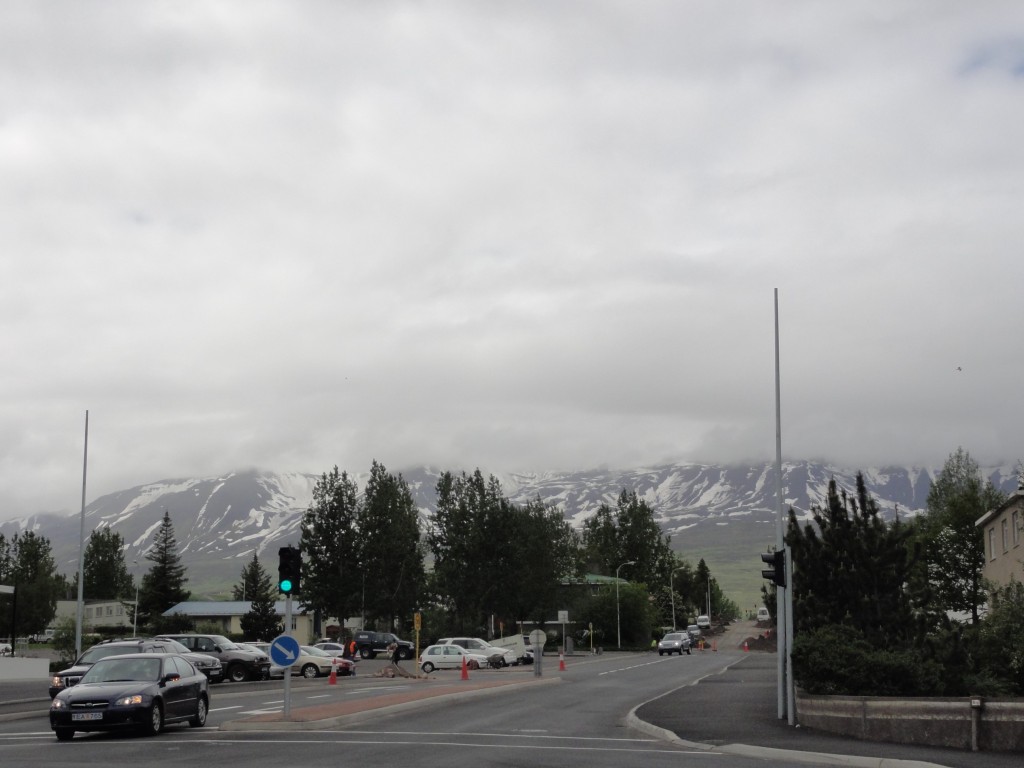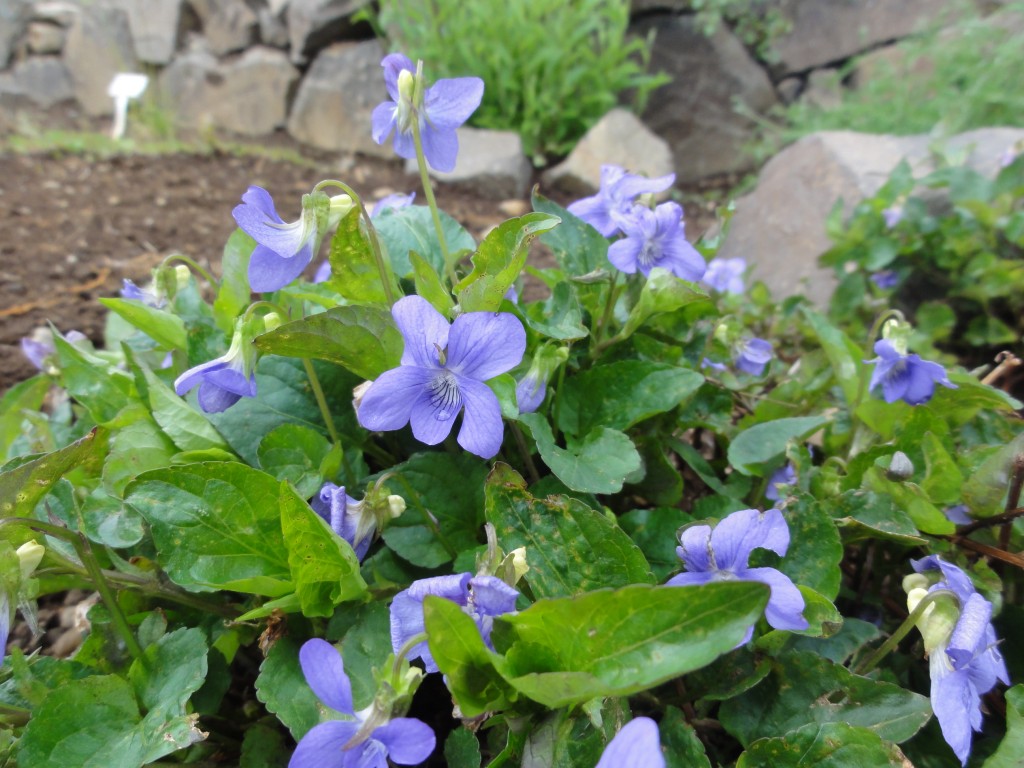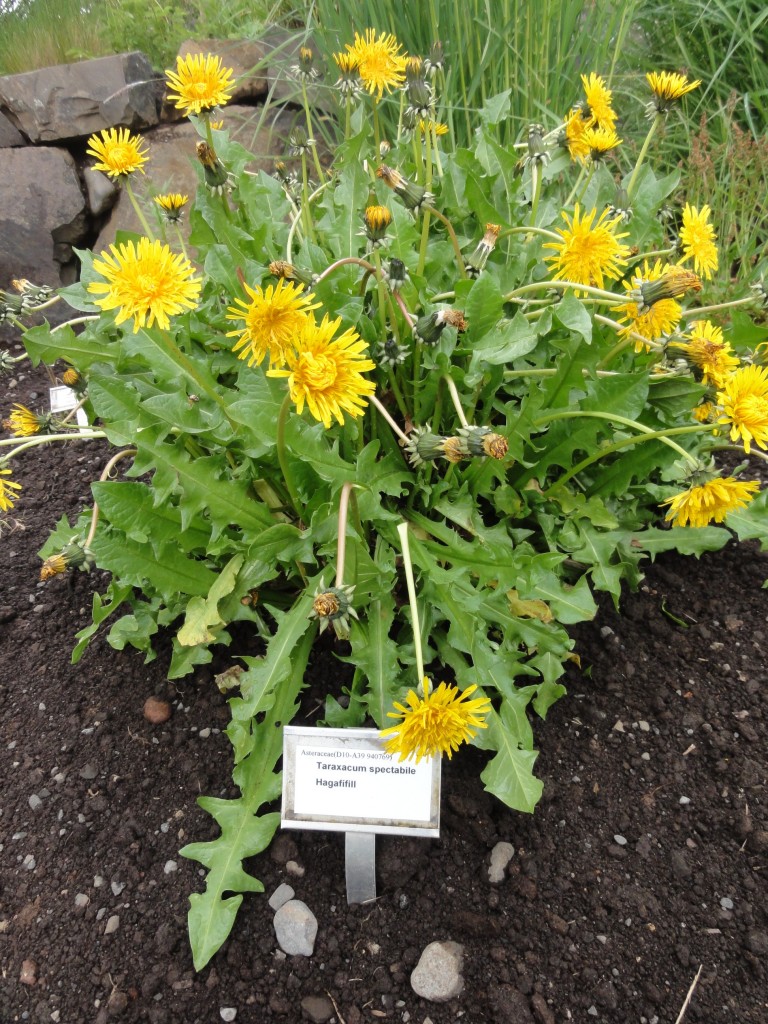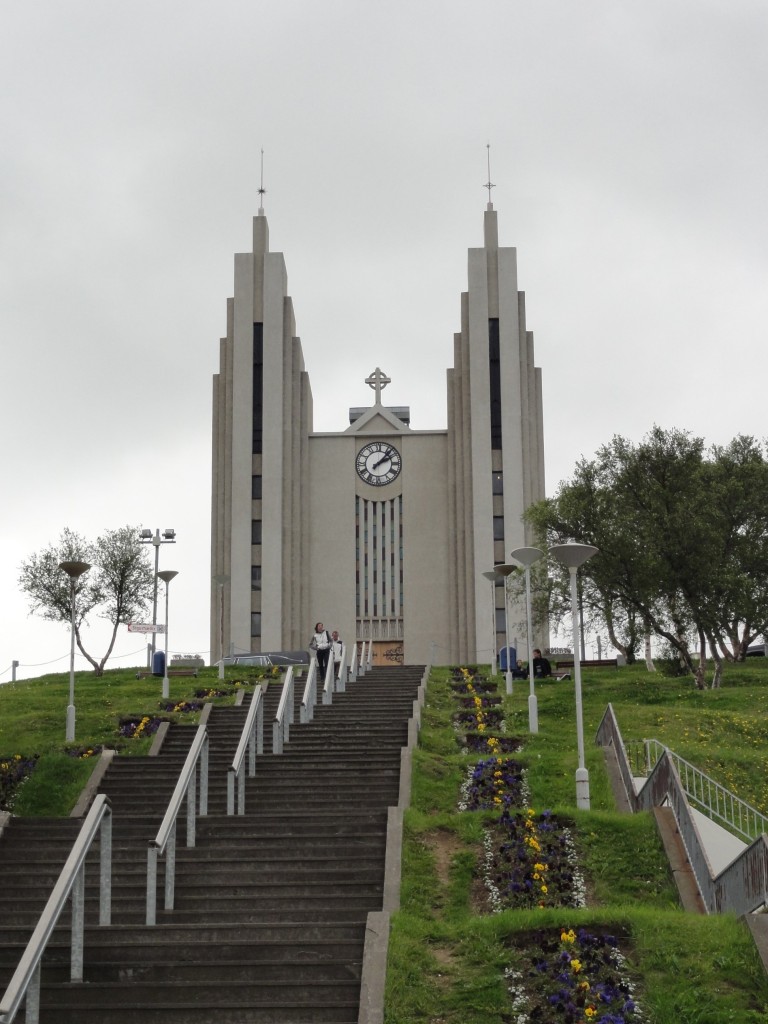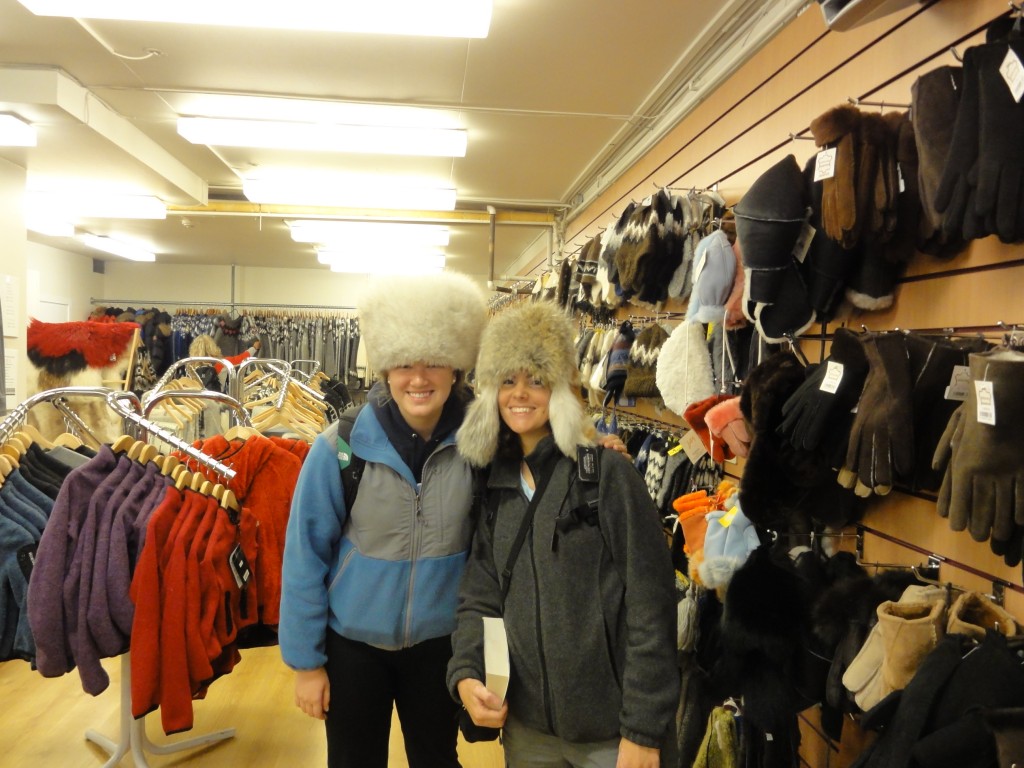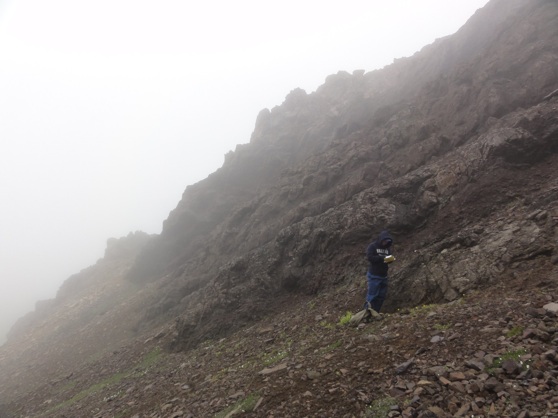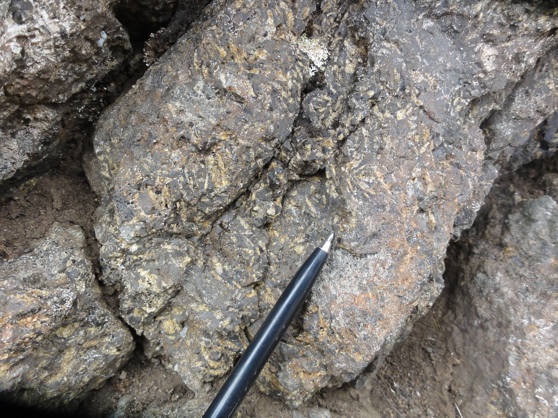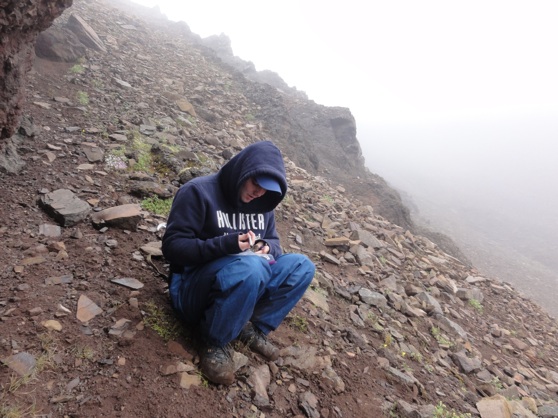AKUREYRI, ICELAND – Since we finished Travis’ field work a day early, we were able to spend Friday in Akureyri, Iceland’s second-largest city. Akureyri has an idyllic location, nestled between a fjord and snow-capped mountains in north-central Iceland.
Our first stop was at the Botanical Gardens, which hosted a surprising variety of plants, given Akureyri’s rugged climate. We saw some familiar flowers that reminded us of the field:

This yellow flower was common in our field areas (it's Icelandic name is Argentina egedii Skeljamura).
There were other flowers that were more exotic:
And then there were flowers that were much too familiar:
Next to the Botanical Gardens, we contemplated statues on the campus of Akureyri’s University.
Next, we admired the Akureyrarkirkja, a columnar basalt-themed church that was designed by the same architect who built Reykjavik’s famous Hallgrimskirkja.
Finally, we visited the historic district for some food and shopping.

View of historic Akureyri. We highly recommend Cafe Paris, in the blue building on the right. The soup and bread is delicious!
A day in Akureyri was the perfect way to celebrate the successful end of two I.S. field projects. We happily headed back to our cabin in Blonduos, where we packed up for our journey back to Hafnarfjordur and started working on our GSA abstracts, which our Estonian colleagues have inspired.



